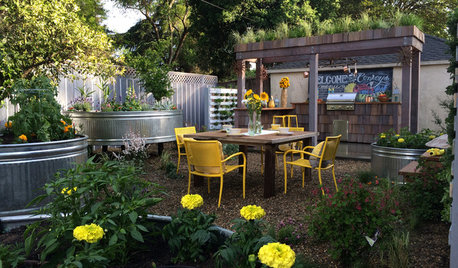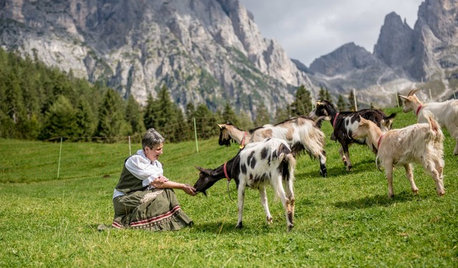Worm Farm Questions
rozj
11 years ago
Related Stories

GARDENING GUIDESHouzz TV: Make a Worm Bin for Rich Soil and Happy Plants
A worm-powered compost bin that can fit under a sink turns food scraps into a powerful amendment for your garden. Here’s how to make one
Full Story
KITCHEN DESIGN9 Questions to Ask When Planning a Kitchen Pantry
Avoid blunders and get the storage space and layout you need by asking these questions before you begin
Full Story
DOORS5 Questions to Ask Before Installing a Barn Door
Find out whether that barn door you love is the right solution for your space
Full Story
REMODELING GUIDESSurvive Your Home Remodel: 11 Must-Ask Questions
Plan ahead to keep minor hassles from turning into major headaches during an extensive renovation
Full Story
GREEN BUILDINGConsidering Concrete Floors? 3 Green-Minded Questions to Ask
Learn what’s in your concrete and about sustainability to make a healthy choice for your home and the earth
Full Story
REMODELING GUIDESConsidering a Fixer-Upper? 15 Questions to Ask First
Learn about the hidden costs and treasures of older homes to avoid budget surprises and accidentally tossing valuable features
Full Story
FARM YOUR YARDAdvice on Canyon Farming From L.A.'s Vegetable Whisperer
See how a screened garden house and raised beds help an edible garden in a Los Angeles canyon thrive
Full Story
FARM YOUR YARDRemake Your Backyard Into a Mini Farm
You can get a taste of country life by line-drying your laundry, growing some produce or going whole hog with the critters
Full Story
FARMHOUSESWorld of Design: See How 9 Families Live and Farm on Their Land
Join us as we visit the homes and farms of passionate food producers and hear about rural life around the globe
Full Story
KITCHEN DESIGNKitchen of the Week: Resurrecting History on a New York Farm
Built with a 1790 barn frame, this modern-rustic kitchen on a working farm honors the past and makes connections in the present
Full StoryMore Discussions






Gerris2 (Joseph Delaware Zone 7a)
sbryce_gw
Related Professionals
Canton Landscape Architects & Landscape Designers · Camas Landscape Architects & Landscape Designers · Waunakee Landscape Architects & Landscape Designers · Wake Forest Landscape Contractors · Woburn Landscape Contractors · Brooklyn Park Landscape Contractors · Fishers Landscape Contractors · Peoria Landscape Contractors · Shoreview Landscape Contractors · Suitland Landscape Contractors · Raytown Landscape Contractors · Milford General Contractors · Rock Island General Contractors · San Marcos General Contractors · Waterville General Contractors11otis
equinoxequinox
Gerris2 (Joseph Delaware Zone 7a)
sbryce_gw
11otis
rozjOriginal Author
Gerris2 (Joseph Delaware Zone 7a)
JerilynnC
equinoxequinox
equinoxequinox
temporal-joe
redrhino
sbryce_gw
redrhino
pskvorc
mittengal
pskvorc
redrhino
barbararose21101
mendopete